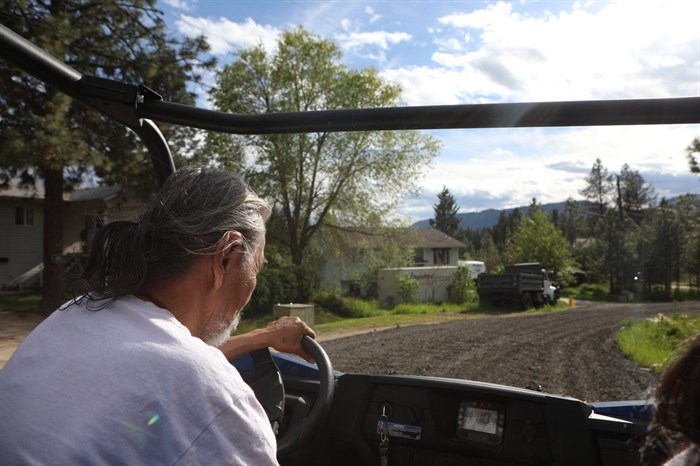
Neskonlith Indian Band members Miranda Dick and her father, Hereditary Chief Saw-ses, drive along Reserve number two roads in Secwepemcúl?ecw that are covered with reclaimed asphalt pavement (RAP) on May 15, 2024.
Image Credit: Aaron Hemens, Local Journalism Initiative
May 30, 2024 - 6:00 PM
Neskonlith Indian Band members say they have been experiencing headaches and dizziness after piles of recycled highway asphalt were spread over roads and dumped in mounds in their community.
Some people from the First Nation near Chase have been uneasy for several weeks after heaps of black pieces of old road material — some finely milled and others in larger chunks — were brought to one of the community’s reserves in south-central “B.C.”
While Neskonlith leadership has told members that the reclaimed asphalt pavement — or RAP — is a cost-effective and safe way to pave reserve roads, others in the community are raising concerns about potential toxicity.
One band member, Jennifer Dick, said she has been feeling lightheaded since the materials were brought in during late April. The 73-year-old believes the asphalt, which has a distinct sulphurous smell, is emitting toxic fumes.
“It’s a dark material causing dark energy,” she said.
Dick had been preparing her one-acre plot of yard for fire mitigation in April, but said she’s been forced to put that work on pause because she hasn’t felt safe going outside.
“The band says we need to pave the roads,” she said. “But not in this way and not with this material.”
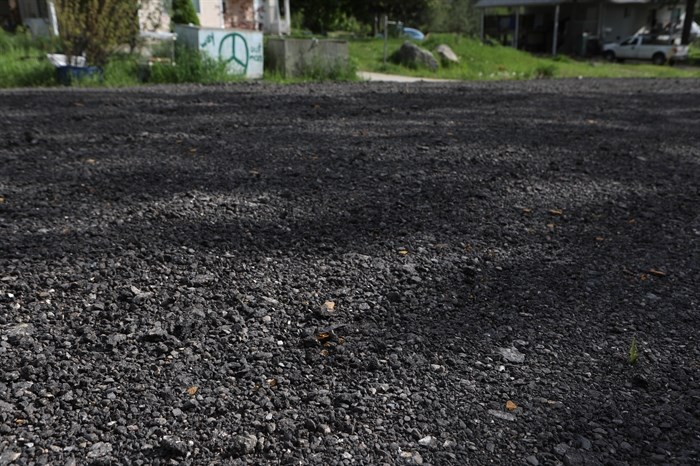
Dumped and spread RAP covers a road located within Neskonlith Indian Reserve number two on May 15, 2024.
Image Credit: Aaron Hemens, Local Journalism Initiative
In mid-May, the streets of Neskonlith’s reserve number two had a bumpy terrain, covered with a gravel-like mixture of asphalt pieces.
Just past the reserve’s entrance, the community’s green space — where a powwow arbour and water treatment facility are located — was splattered with several piles of the old highway asphalt, with an off-duty excavator parked nearby. The mounds varied in size with the largest being about six feet tall.
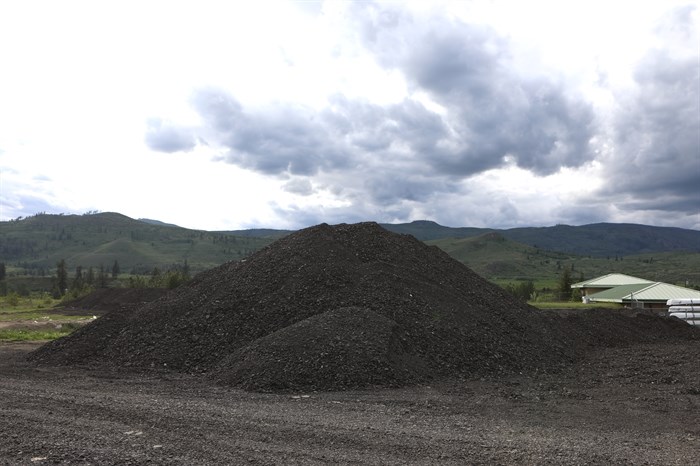
The stockpile of RAP, stored nearby the community pow wow arbour and water treatment facility, on May 15, 2024.
Image Credit: Aaron Hemens, Local Journalism Initiative
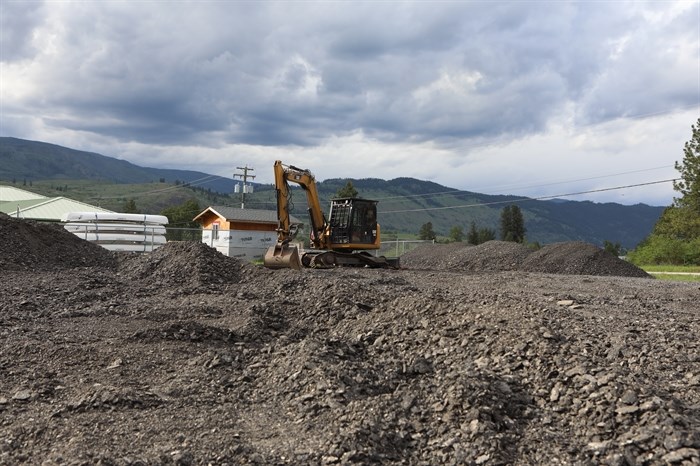
A stationed excavator at the site of the stockpile of RAP, stored nearby the community pow wow arbour and water treatment facility, on May 15. Photo by
Image Credit: Aaron Hemens, Local Journalism Initiative
Neskonlith Band member Miranda Dick had welcomed a newborn granddaughter at the beginning of May. When a heatwave swept through the area mid-month, she said she had to close the windows and turn off the AC out of safety for the baby, because she was concerned that the RAP’s fumes — which she describes as oil-like — were seeping into her home.
“I was getting headaches for about five days. I had this taste of oil — it was feeling like it was getting all over my face or body,” she said.
“My throat was irritated and burning. I asked my kids in the house and they said the same thing; headaches.”
Jennifer, Miranda and others have argued that members were not made aware of — or consented to — the stockpiling and use of RAP in their community.
IndigiNews reached out to Neskonlith chief and council by phone and email with questions and to request an interview but did not receive a response.
‘I did not run for chief just to poison us‘
The recycled asphalt is old pavement from Highway 1 on the Trans Canada Highway, which runs adjacent to Neskonlith Indian Reserve numbers one and two in Secwepemcúl?ecw.
At the end of April, the provincial Ministry of Transportation and Infrastructure began installing new pavement on the highway outside the reserve, contracting local pavers Dawson Construction to complete the job, the ministry confirmed in a statement to IndigiNews.
According to the ministry, Dawson then made an agreement with the First Nation’s economic development department, Sk’atskin Resources, to recycle the milled material and use it to improve the reserve’s roads.
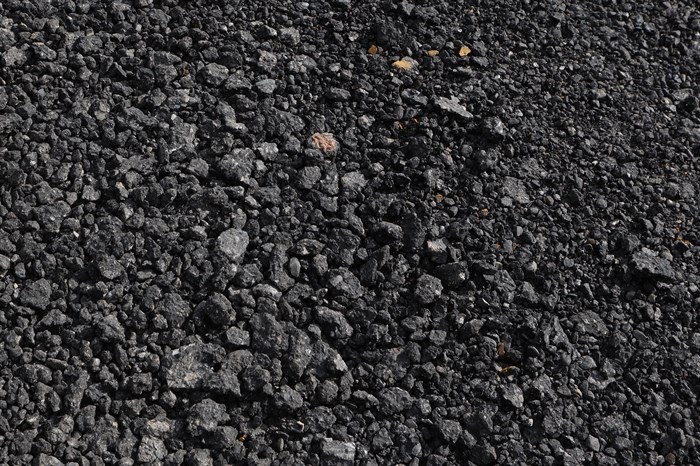
A close-up of the RAP – a mix of fine milling and chunks of old pavement – covers a road located within Neskonlith Indian Reserve number two on May 15, 2024.
Image Credit: Aaron Hemens, Local Journalism Initiative
IndigiNews reached out to Sk’atskin Resources and Dawson Construction but did not receive a response.
As the highway was paved, truckloads of the road’s old asphalt were stockpiled at Neskonlith IR number two, near their powwow arbour and water treatment plant. Community members told IndigiNews that Sk’atskin employees loaded their trucks with RAP from the pile in the middle of the night and blanketed the reserve’s streets with the material.
In their April 22 memo to the community, Sk’atskin Resources said that this work would carry on for four weeks throughout IR numbers one, two and three. They described the work as “road maintenance” that would occur throughout the night, to keep the daytime traffic disturbance to a minimum.
There was no mention of RAP in the memo, or in the notice issued three days prior, which only stated that Dawson Construction will be conducting road maintenance and upgrades to the Trans Canada Highway.
As the work continued for weeks, tensions grew in the community, with a photo of a damaged worker’s truck circulating on social media.
Kukpi7 (Chief) Irvin Wai addressed the situation in a May 17 letter to the Neskonlith community, alleging that he received threats and that the band only had “a very short time” to decide if they wanted the RAP or not.
“I did not run for chief just to poison us, as I have been accused of sadly,” the letter said, in part.
“It is some of our Elders and band members who are spreading this misinformation on their social media along with the so-called land defenders.”
That same day, Sk’atskin Resources denounced the “sensationalized” actions of some members in their own memo to the community.
The group explained in the notice that the roads in the community were unsafe because of potholes and that reclaimed asphalt was a more economical option than gravel.
The community notice from Sk’atskin said that the RAP is not toxic, that it poses no health risks unless ingested, and noted that Environment and Climate Change Canada officers attended the reserve and confirmed there were no health risks from the asphalt unless it was ingested.
In fact, Sk’atskin’s memo said the RAP would benefit the community, through improved road conditions and longevity, dust control, water control and reduced wildfire risk.
However, in a material data safety sheet Sk’atskin Resources provided the community, it’s noted that graded asphalt is also harmful if inhaled, and that people should avoid breathing its fumes, dust and vapour.
Performance-graded asphalt cements are classified with “acute toxicity” when inhaled, and as a possible carcinogen, according to the report by McAsphalt Industries (MCA).
Asphalt is binded with bitumen, which is produced through the distillation of crude oil.
“We regret that some members feel that the project and the information could have been communicated and executed better to the Neskonlith community and for that we are truly sorry and intend to do better in the future,” the memo credited to Sk’atskin Resources said.
They added that the project’s intent was to address the needs outlined in the Band’s 2016 Comprehensive Community Plan, which asked for paved roads on all reserve roads.
But the community plan also states that the First Nation’s land code should consider the environment first and foremost, and that “it should be the people” who control the land, not chief and council.
“If it was made known to us that this was going to happen, maybe we could’ve debated and discussed it,” said Jennifer Dick.
“Our rights for being heard are being violated — our rights for a say in our community.”
‘We have valid concerns’
Neskonlith Band member Dawn Morrison, who is the founder of the Working Group on Indigenous Food Sovereignty, said there’s been a lack of respect from chief and council towards concerned community members.
“Treating us like we’re just a bunch of troublemakers when really, we have valid concerns,” said Morrison.
“Our society has very qualified Indigenous knowledge holders and experts. Just as community members — if we’re upset about a smell or anything, we should have a voice.”
Morrison is a co-chair of the Lakes Secwepemc Foodland Conservation Society. On behalf of the group, they issued two cease and desist letters to Neskonlith’s chief and council and the Ministry of Transportation and Infrastructure, one on May 14 and the other on May 23.
In their letters, they asked for the removal of the RAP, as well as greater transparency around the decision-making process that led to the asphalt being dumped in the first place.
They said that requesting such information is necessary to prove that due diligence was conducted in assessing and reviewing social and environmental risks. These include how the old asphalt will impact the health of vulnerable community members, as well the greenspace and water treatment facility where the material has been stored nearby.
“Our letter outlines valid concerns for the social and environmental risks to our tmicw (land), sellkwe (water), and qelmucw (people) associated with your decision to purchase and dump the RAP on band land using band funding without adequate free, prior informed consent,” they wrote.
“The dumping of the RAP on band lands poses serious health and environmental concerns about the smell/air contamination near some homes and the powwow arbour where children and families play, as well as leaching into soil and groundwater on the land adjacent to Neskonlith Goodwater — the source of the community drinking water, the community garden, and ditches along roadways.”
They have also called for independent testing of the RAP’s toxicity levels, according to Neskonlith Band member Janice Billy. As for remediation plans, they aren’t sure if any exists.
“Water’s gonna mix with it. There’s no talk about when water mixes with it,” Morrison told IndigiNews.
Billy, who is the co-chair of the Lakes Secwepemc Foodland Conservation Society with Morrison, added that many people in the community have compromised immune systems.
“People are already weakened,” she said.
“And to bring in something like that, makes it even more compromising for people’s health.”
Billy added that the community was not informed properly.
“There was a community plan a few years ago where people wanted paved roads. But they meant proper roads, not just this.”
Despite their concerns, Morrison and Billy both said that they haven’t received any responses from governments.
“We’ve written them letters — they’re not answering. They’re just not answering us,” said Billy.
They both called the project “environmental racism,” with Morrison saying that “nobody would accept that dump in their backyard.”
“They put in a fancy new highway and there’s no way for people on-reserve to get to town, knowing that a lot of people don’t drive. There’s no proper walkway or bike route. People live in poverty and don’t have cars,” she said.
“It’s cutoff access for us.”
In addition to the immediate removal of the RAP from reserve roads, the group said that they’d like to see improved communication and consultation with the community from chief and council regarding future projects.
Morrison said that she’d like to see some sort of transformative justice take place.
“Like having accountability of leadership,” she said. “I think there needs to be something that changes here, because if it’s not this issue, it’ll just be the next one.”
— This story was originally published by IndigiNews.
News from © iNFOnews, 2024